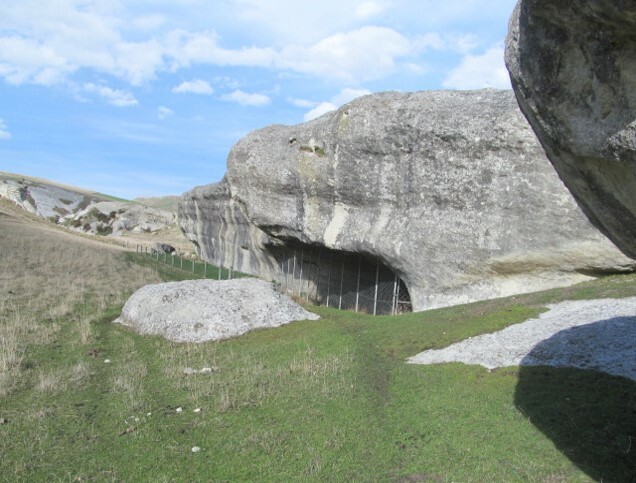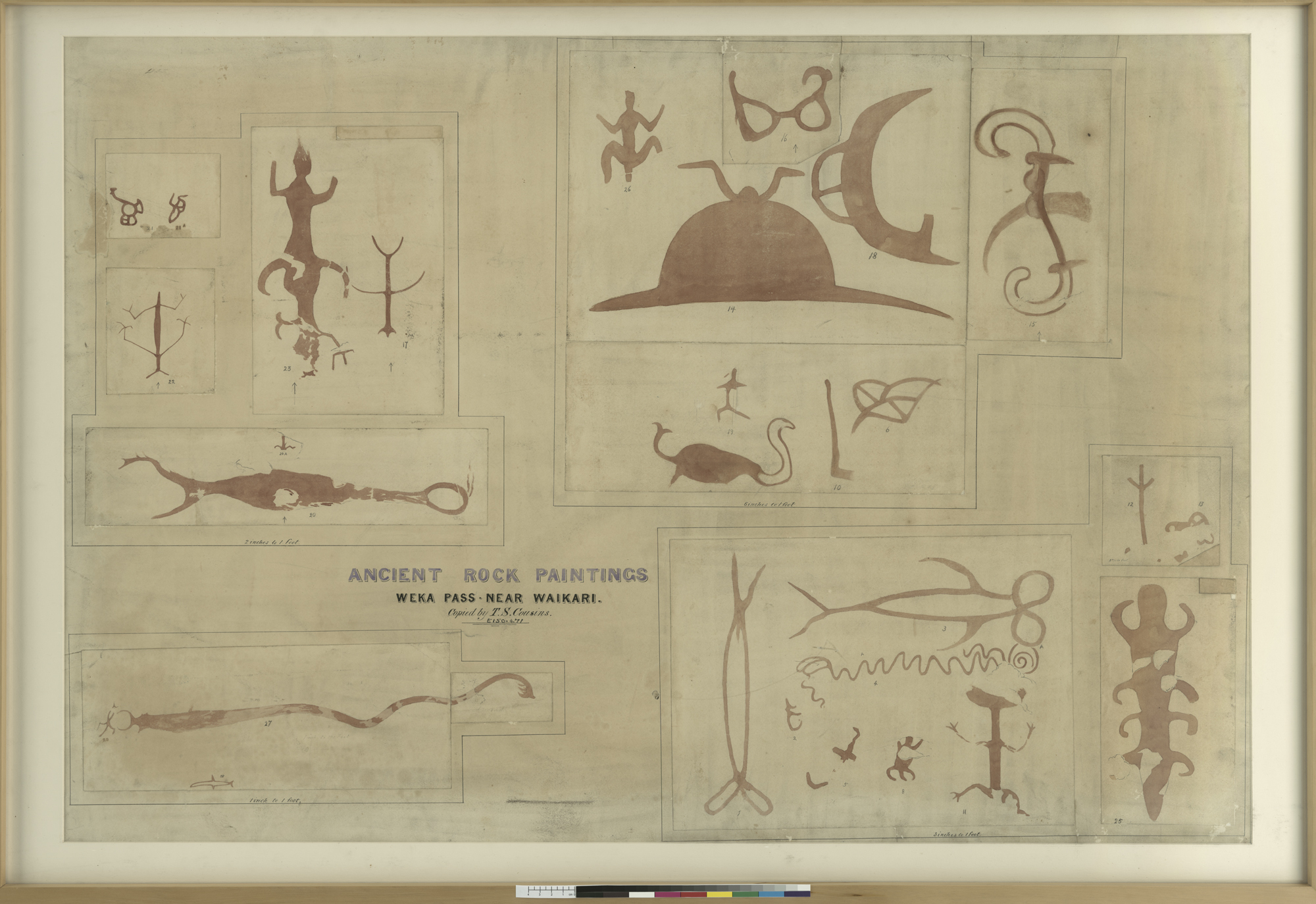The Weka Pass rock art site is about a 20 minute walk from Waikari township in Hurunui. Canterbury Museum has a relationship to this site having commissioned copies of the Māori rock drawings there on three different occasions.

The first was the artist Thomas Selby Cousins (1840–97), engaged by Museum founder Julius von Haast. The large scale watercolours and small studies he completed are important because they show the site before it was disastrously “restored” with house paint by Thomas Heberley and W B Oliver in 1930.
In 1945, Theo Schoon (1915–1985) was engaged by former Museum director Roger Duff to record the rock art sites of Canterbury and North Otago. Amongst Schoon’s paintings there are seven that fit together to give a representation of the Weka Pass site.
The Museum also holds hundreds of large crayon-on-polythene tracings completed by Tony Fomison (1939–1990) and others in the 1960s and 70s.
In December 2015, the Museum received Lottery Grant funding to ensure these important tracings, copied from Weka Pass and other rock art sites in Canterbury and Otago, are preserved long-term. Two artists and a conservation team worked to scan the tracings and create replicas. In the future, these copies will be available for public programmes, display and research. The extremely fragile originals are now housed in oxygen-free storage, increasing their long-term survival.







